Trees Birds Mammals Fish Amphibians Reptiles
Wild Algarve
Bookshop
Cirsium arvense - Creeping Thistle
Phylum: Magnoliophyta - Class: Equisetopsida - Order: Asterales - Family: Asteraceae
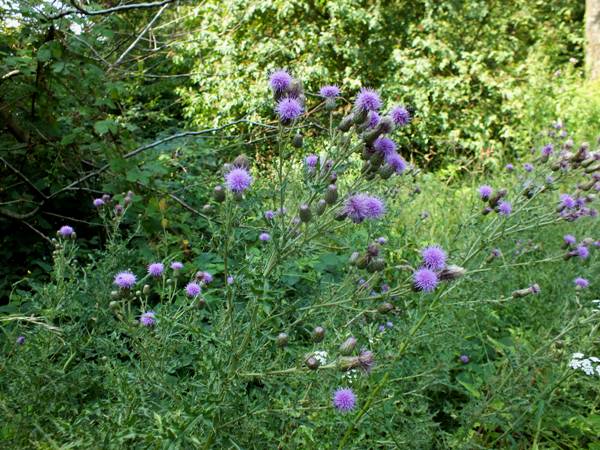
The most common of the thistles found in Britain and Ireland, Creeping Thistle is an important source of food for many small birds.
Description
A widespread and common perennial of grasslands, Creeping Thistle grows to a height of up to 1.5 metres with smooth branching stems, mainly without wings. The leaves, which are spiny and usually lobed, are alternate along the stems and up to 20cm long and 3cm wide (smaller the higher up the stems they occur). Stems terminate in up to five flower heads. Pinkish-purple (occasionally white), the flower heads are typically 1 to 2 cm across,with no differentiation between disc and ray florets. In late summer and autumn the seeds, which have feathery white papuses ('parachites' as some people like to call them) are carried away on the breeze.
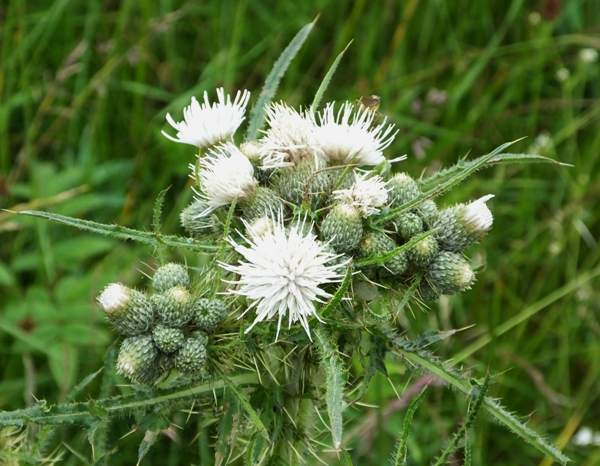
Above: White form of Cirsium arvense at Marfield Wetland, Yorkshore UK
Plants are often dioecious (bearing either male or female flowers), and pollination is mainly by insects; however, Creeping Thistle also spreads vegetatively via its root system to produce some very large clonal colonies.
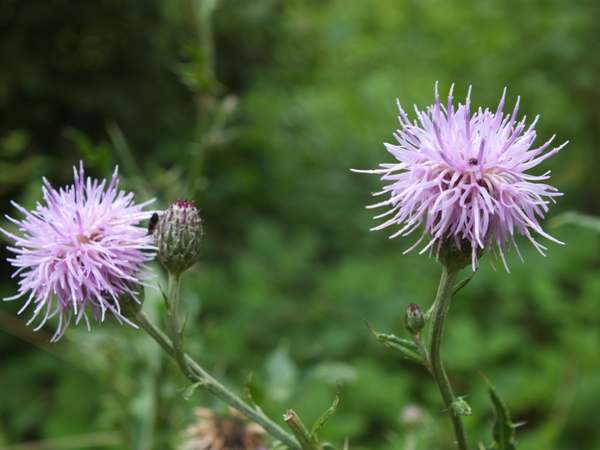
Distribution
Common throughout Britain and Ireland, this species is native to Europe and Asia and it is an introduced alien invasive weed in many other parts of the world including North America (where it is sometimes confusingly referred to as Canada Thistle).
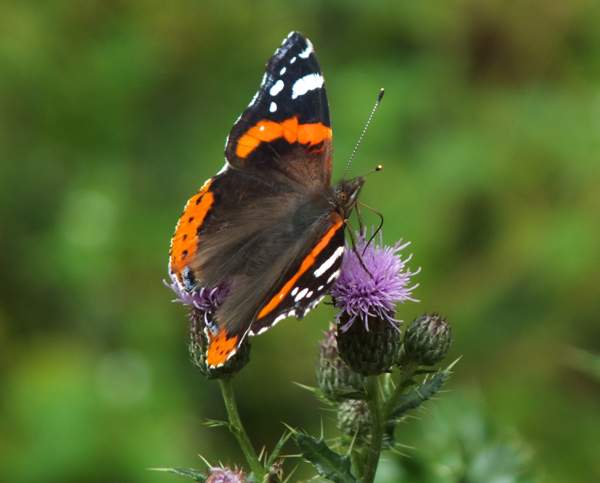
Habitat
Creeping Thistle grows on roadside verges, woodland edges, wasteland and field margins. It is a common weed of cultivation and many permanent pastures.
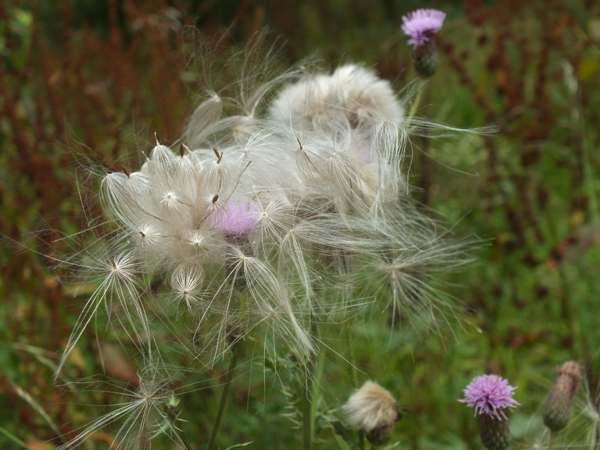
Blooming Times
In Britain and Ireland Creeping Thistle flowers first appear in June and continue into August.
Uses
A wide range of insects, including bees and butterflies, appear to be very fond of the flowers of Creeping Thistle. Small birds, and in particular Goldfinches, feed on the seeds of this plant.
Etymology
Cirsium, the genus name, comes from Greek and means a kind of thistle. The specific epithet arvense comes from Latin and means 'of the field'.
Sue Parker's latest ebook is a revised and enlarged edition of Wild Orchids in The Burren. Full details here...
Buy it for just £5.95 on Amazon...
Sue Parker's new ebook is a comprehensive and fully revised edition of her acclaimed field guide to the Wild Orchids of Wales. Full details here...
Buy it for just £5.95 on Amazon...
Please Help Us: If you have found this information interesting and useful, please consider helping to keep First Nature online by making a small donation towards the web hosting and internet costs.
Any donations over and above the essential running costs will help support the conservation work of Plantlife, the Rivers Trust and charitable botanic gardens - as do author royalties and publisher proceeds from books by Pat and Sue.